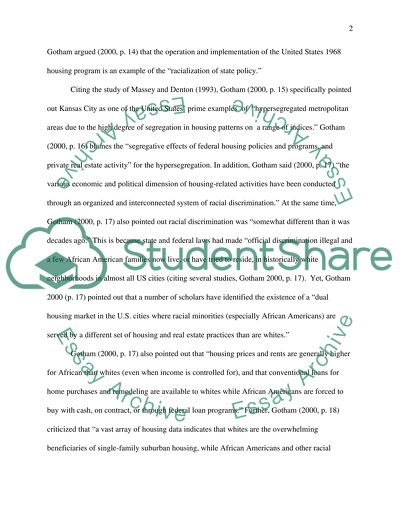Cite this document
(“Housing segregation in the us Research Paper Example | Topics and Well Written Essays - 2250 words”, n.d.)
Housing segregation in the us Research Paper Example | Topics and Well Written Essays - 2250 words. Retrieved from https://studentshare.org/miscellaneous/1571930-housing-segregation-in-the-us
Housing segregation in the us Research Paper Example | Topics and Well Written Essays - 2250 words. Retrieved from https://studentshare.org/miscellaneous/1571930-housing-segregation-in-the-us
(Housing Segregation in the Us Research Paper Example | Topics and Well Written Essays - 2250 Words)
Housing Segregation in the Us Research Paper Example | Topics and Well Written Essays - 2250 Words. https://studentshare.org/miscellaneous/1571930-housing-segregation-in-the-us.
Housing Segregation in the Us Research Paper Example | Topics and Well Written Essays - 2250 Words. https://studentshare.org/miscellaneous/1571930-housing-segregation-in-the-us.
“Housing Segregation in the Us Research Paper Example | Topics and Well Written Essays - 2250 Words”, n.d. https://studentshare.org/miscellaneous/1571930-housing-segregation-in-the-us.


